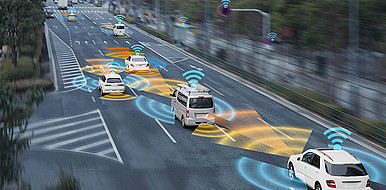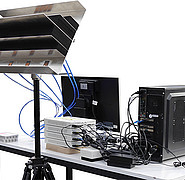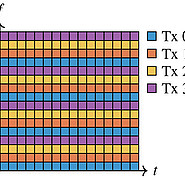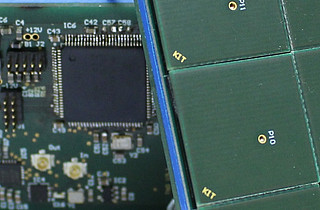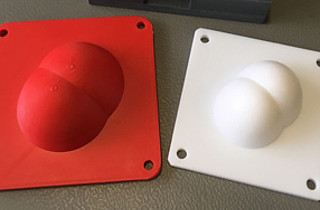Transmit signal separation for MIMO radars
Radar applications can be found in many areas of use, such as advanced driver assistance systems (ADAS) or unmanned aerial vehicles in the traffic sector. Building management relies on radar systems to make a statement about the stability of buildings. In industry, for example, they are used for automated detection of small deviations in quality assurance systems.
State of the art
To achieve a particularly high spatial resolution, so-called MIMO radar systems (multiple-input multiple-output) are used. Here, several spatially distributed transmit antennas are available, whereby any transmit signal can be emitted by each antenna and in turn received by each receive antenna. The multitude of signal paths created in this way allows the scene under consideration to be comprehensively surveyed. In order for the individual propagation paths to be reconstructed at the receiver, the transmitted signals must be clearly separable. This is typically achieved by bundling with regard to temporal transmission or by a certain form of coding (time or code division multiplexing).
Technology
At the Institute of Radio Frequency Engineering and Electronics, an optimized method has been developed to further improve the dynamics and resolution of MIMO radars. For this purpose, the different subcarriers of a multicarrier signal are allocated to the transmit antennas according to a specific scheme. The signals generated in this way are spectrally interleaved without reducing the system bandwidth of the individual transmitters (spectrally interleaved multicarrier). This MIMO method can be ideally combined with the modulation scheme 'Orthogonal Frequency-Division Multiplexing' (OFDM).
Advantages
The new method achieves complete separability of signals while maintaining the complete signal bandwidth, making it superior to conventional methods: Different from time-division multiplexing, several transmitters can be active simultaneously, thus fast-moving or changing objects can be detected and their velocities unambiguously measured. Compared to code division multiplex, a considerably higher dynamic range is achieved.
Options for companies
KIT is looking for manufacturers of radars for application-specific development projects and for licensing the technology. Possible applications range from radar sensors for Industry 4.0, automotive radars, radars for environment and air surveillance, to Integrated Sensing and Communication (ISAC) systems.
Your contact person for this offer
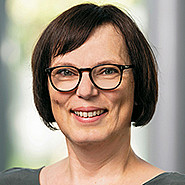
Innovation Manager Mobility and Information Karlsruhe Institute of Technology (KIT)
Innovation and Relations Management (IRM) Phone: +49 721 608-28460
Email: birgit.schulze@kit.edu

